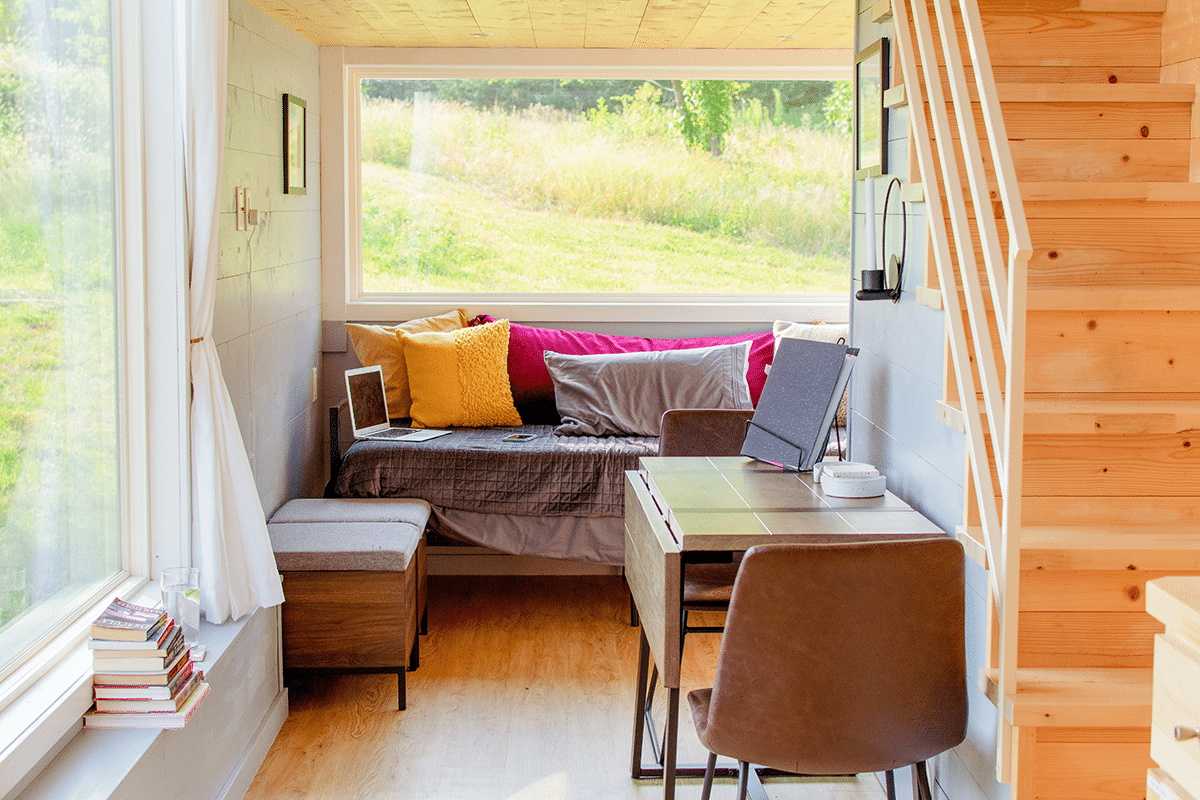Are you dreaming of selling your tiny home and moving on to the next adventure? Selling a tiny home can be a wild journey filled with unexpected twists and turns. From navigating legal hoops to finding the perfect marketing strategy, it is no easy task. It also begs the question: How long does it take to sell a tiny home?
The time it takes to sell a tiny home varies based on factors such as location, market demand, and the specific features of the home. On average, well-priced and well-presented tiny homes tend to sell relatively quickly, often within 3-6 months.
Before setting unrealistic expectations or succumbing to frustrations along the way, let’s dive into the nitty-gritty details that influence your tiny home’s sale timeline. Get ready to embark on this exciting yet challenging journey towards selling your beloved tiny abode.
Factors Influencing the Time to Sell
When considering the factors influencing the time to sell a tiny home, it is essential to analyze several key points.
Location and Land Access
Location and land access play a significant role in determining how long it takes to sell a tiny home. The accessibility of the location for tiny homes, including transportation options and proximity to local amenities, can greatly impact its demand in an area.
Zoning regulations may also restrict where tiny homes can be placed, limiting potential buyers’ options. It is essential to consider these factors when selling a tiny home, as they can either attract or deter potential buyers.
By understanding the unique characteristics of your location and its appeal to prospective buyers, you can make informed decisions that help expedite the sales process. Knowing the top states where tiny houses are popular can also help make the process go faster.
Here’s a quick look at those states:
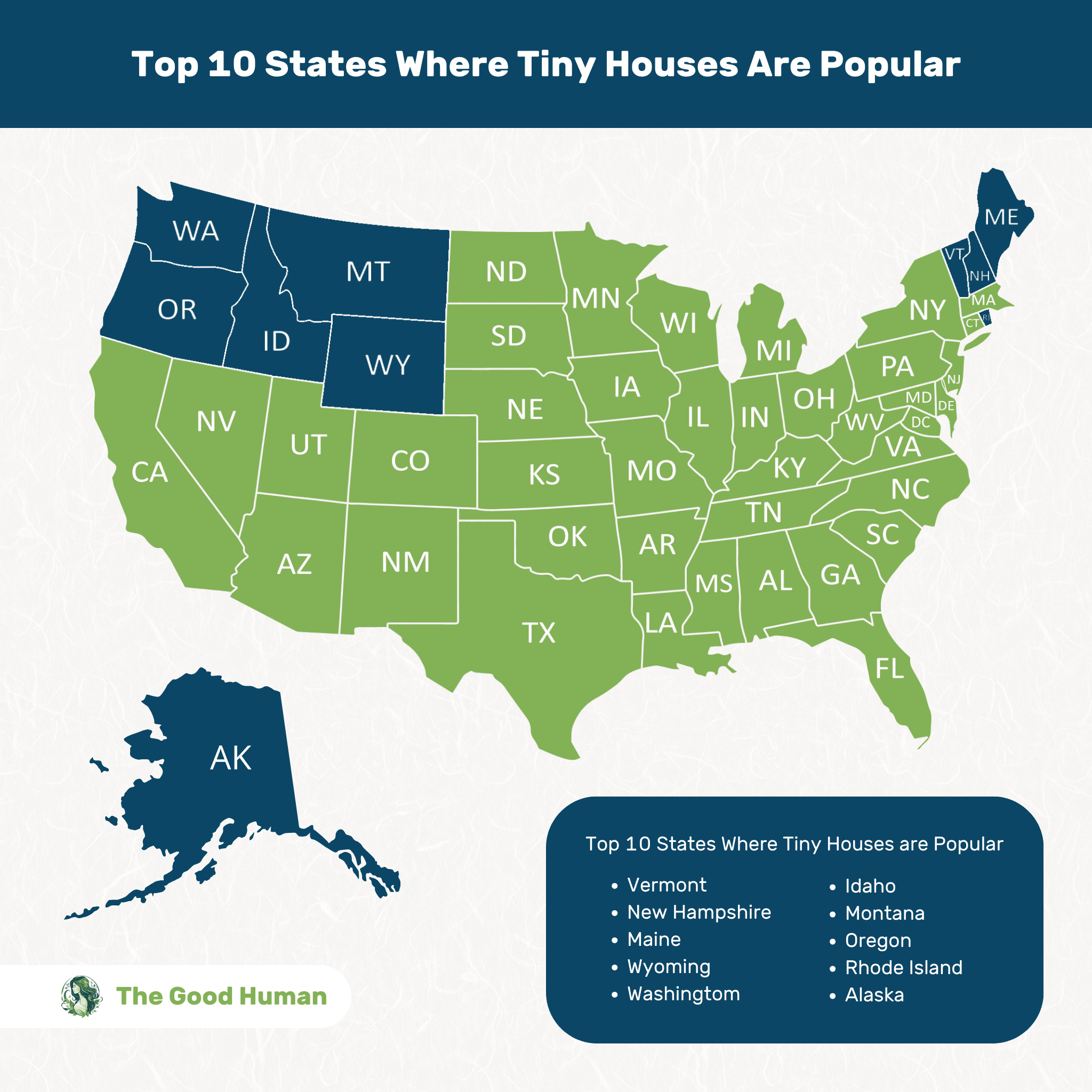
Market Conditions
In today’s market, you will want to pay close attention to the current conditions before diving into selling your compact living space.
Housing affordability, economic growth, demographic trends, the rental market, and homeownership rates are all factors that can influence how long it takes to sell a tiny home. Analyzing these variables can provide valuable insights into the potential demand for your property.
When it comes to housing affordability, buyers are often looking for affordable options in an increasingly expensive market. If your tiny home is priced competitively and offers a cost-effective alternative to traditional homes, it may attract more potential buyers.

Economic growth also plays a role in determining the time it takes to sell a tiny home. When there is strong economic growth and job opportunities in an area, people are more likely to invest in homeownership or explore alternative housing options, like tiny homes.
Demographic trends can also impact the demand for tiny homes. For instance, younger generations who prioritize minimalism and sustainability may be more interested in purchasing a compact living space.
Additionally, the rental market can affect how quickly you sell your tiny home. In areas with high rental demand and a limited supply of affordable rentals, individuals might consider buying a tiny home as an investment or primary residence.
Lastly, homeownership rates play a significant role in determining how long it takes to sell a tiny home. Areas with higher homeownership rates generally have lower demand for alternative housing options like tiny homes.
Design and Features
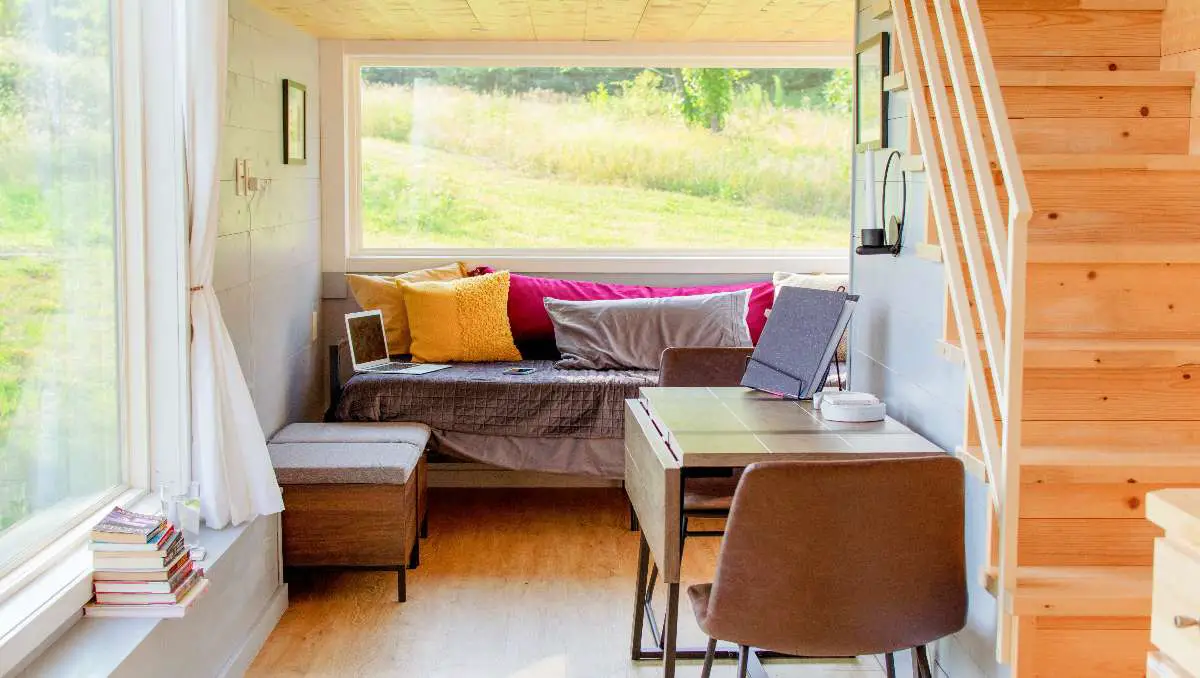
To maximize your chances of a swift sale, focus on designing and incorporating unique features that will make your compact living space stand out in a sea of ordinary houses.
When it comes to the interior layout, think about maximizing the use of space by utilizing open floor plans and multipurpose furniture. Additionally, consider using sustainable materials such as reclaimed wood or recycled countertops to attract eco-conscious buyers.
Storage solutions are essential in tiny homes, so be sure to include clever storage options like built-in cabinets and hidden compartments. Additionally, consider optimizing the use of space for utility systems, including tiny house plumbing.
Energy efficiency and storm-safety is another key factor that potential buyers look for, so incorporate energy-saving appliances, insulation, and good foundation into your design.
Finally, offer customization options to allow buyers to personalize their tiny home according to their needs and preferences. By focusing on these design elements, you can create a unique and sustainable tiny home that will sell quickly in today’s market.
Marketing and Visibility
Boost your chances of a quick sale by increasing the visibility and marketing of your compact living space. Implementing effective marketing strategies is crucial to attracting potential buyers to your tiny home.
Utilize online advertising platforms to reach a larger audience and promote the unique features of your property. Social media promotion can be highly influential in generating interest, so create captivating content that showcases the benefits of living in a tiny home.

Additionally, word of mouth can be a powerful tool, so encourage satisfied customers to spread the word about their positive experiences with your tiny home. Consider targeted advertising techniques to reach specific demographics who’re more likely to be interested in compact living spaces.
Seasonal Trends
When it comes to selling a tiny home, understanding seasonal trends can greatly impact your success. In winter, there is a high demand for cozy spaces as people seek warmth and comfort. Highlighting features like efficient heating systems and insulation can attract potential buyers this season.
During the summer, market your tiny home as a perfect vacation getaway, emphasizing outdoor living areas and proximity to popular destinations.
Take advantage of holiday markets in the winter months to showcase your unique property and connect with interested buyers.
Spring home shows provide opportunities to display your tiny home’s innovative design and energy-efficient features.
Finally, embrace the beauty of fall foliage by staging your tiny home amidst vibrant autumn colors, creating a sense of tranquility for potential buyers seeking a peaceful retreat.
Setting Realistic Expectations: Average Time on the Market
| Region | States Included | Average Selling Time (Days) |
|---|---|---|
| Northeast | VT, NH, ME, MA, CT, RI, NY | 42 |
| Mid-Atlantic | NJ, PA, DE, MD, VA | 55 |
| South Atlantic | NC, SC, GA, FL | 68 |
| East North Central | WI, IL, MI, IN, OH | 72 |
| West North Central | MN, IA, MO, ND, SD | 84 |
| South Central | KY, TN, AL, MS, LA | 91 |
| Mountain | MT, ID, WY, CO, NV, UT, AZ, NM | 58 |
| Pacific | WA, OR, CA | 37 |
Setting realistic expectations regarding the average time it takes to sell a tiny home is crucial. Understanding market expectations and having a clear understanding of the typical selling time frame can help you navigate this process more effectively.
On average, it takes around 3 to 6 months for a tiny home to be sold. However, this time frame varies depending on various factors, such as location, market demand, and pricing strategy. In some cases, it may take longer than expected due to limited buyer interest or specific regional trends.
To set realistic expectations when selling your tiny home, it is important to do thorough research about the current market conditions in your area. Analyze recent sales data for similar properties and consult with real estate professionals who specialize in tiny homes. This will provide you with valuable insights into what you can expect during the selling process.
Keep in mind that even though the process may seem slow at times, there are steps you can take to speed up the sale of your tiny home. These include properly staging your space, highlighting unique features, and marketing aggressively through online platforms.
Preparing Your Tiny Home for Sale
When preparing your tiny home for sale, it is important to focus on enhancing its curb appeal. This can be achieved through simple tasks such as freshening up the exterior paint, tidying the landscaping, and ensuring that the entryway is inviting.
Curb Appeal

Enhancing the curb appeal of a tiny home can significantly decrease the time it takes to sell. The exterior appeal plays a crucial role in attracting potential buyers and creating a sense of belonging.
A well-maintained landscape design can make a small space feel more inviting and spacious. Consider adding greenery, flowers, or potted plants to create an appealing outdoor oasis.
Pay attention to the front porch area by keeping it clean, organized, and aesthetically pleasing. Window treatments such as curtains or blinds can add privacy and style while allowing natural light to enter the home.
Lastly, choosing the right paint color for your tiny home’s exterior can make a big difference in its overall appeal. Selecting neutral tones or trendy colors that complement the surrounding environment can attract more interest from buyers looking for their perfect tiny abode.
Staging
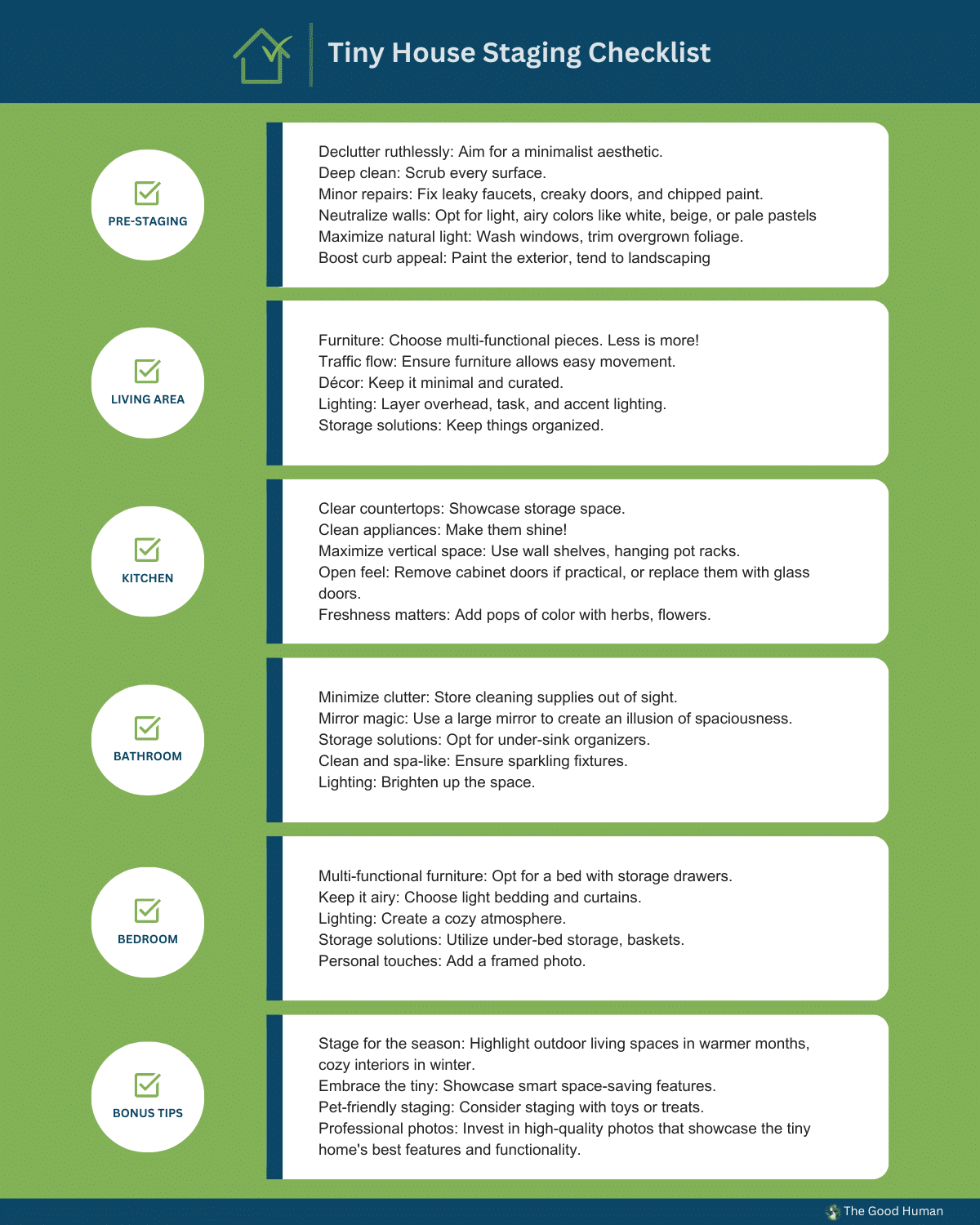
Staging is all about presenting your home in its best light and creating an inviting atmosphere for potential buyers. To achieve this, consider these staging tips.
First, focus on furniture placement to maximize space and create easy flow throughout the home. Choose home decor that complements the style of your tiny home while keeping it clutter-free.
Experiment with different color schemes that evoke feelings of warmth and coziness. Lastly, pay attention to lighting techniques to enhance the ambiance and make your space feel bright and welcoming.
Photography and Marketing
To effectively market your tiny home, captivating photography is essential in capturing the unique features and charm of your property. Utilizing various photography techniques can greatly enhance the visual appeal of your listing.
Consider using wide-angle lenses to showcase the spaciousness of your tiny home, as well as close-up shots to highlight intricate details.
Nowadays, social media provides a very powerful tool for marketing. By utilizing these platforms and implementing branding strategies that align with your target audience, you can reach a wider range of potential buyers.
Visual storytelling through well-crafted images can evoke emotions and create a sense of belonging for viewers, increasing their desire to own your tiny home.
Remember to present an accurate representation of your property while highlighting its best features through expertly crafted photographs.
Pricing Strategies for Tiny Homes
When pricing your tiny home, it is important to conduct a thorough market analysis to understand the current trends and demand in the industry. By analyzing recent sales data, you can determine a competitive price range for your tiny home.
Market Analysis

Let’s get into a market analysis of factors affecting the sale of tiny homes. Pricing analysis plays a crucial role in determining the speed at which these homes are sold. Understanding buyer demographics is essential to targeting the right audience and catering to their preferences.
Market competition also influences the time it takes to sell a tiny home, as sellers must differentiate themselves from others in order to attract buyers. Seller motivation can impact the speed of sales, as highly motivated sellers may be willing to negotiate and close deals faster.
Negotiation Tactics
In order to sell a tiny home quickly, sellers must employ various psychological tactics, communication techniques, bargaining strategies, persuasion methods, and conflict resolution techniques.
- Psychological tactics play a significant role in negotiation. Sellers may create a sense of urgency by highlighting the limited availability or emphasizing the unique features of their tiny home.
- Effective communication techniques involve active listening and empathizing with buyers’ needs and concerns.
- Bargaining strategies include presenting multiple offers or incentives to entice buyers.
- Persuasion methods are essential for convincing buyers that the tiny home is worth its price. This can be achieved by showcasing its benefits, such as energy efficiency or low maintenance costs.
- Conflict resolution techniques are crucial in resolving any disagreements that may arise during negotiations.
By utilizing these skills and strategies, sellers can effectively negotiate the sale of their tiny home within a reasonable timeframe while satisfying both parties involved.
Legal and Administrative Considerations
To make selling a tiny home as smooth as possible, you should be aware of the legal and administrative considerations involved. These factors play a crucial role in ensuring a successful transaction.
When it comes to legal considerations for tiny homes, it is essential to familiarize yourself with zoning regulations and building codes in your area. Different jurisdictions may have specific requirements for where tiny homes can be located and how they must be built. It is important to ensure that tiny home complies with these regulations to avoid any potential issues during the selling process.
Additionally, obtaining the necessary permits and licenses is another vital aspect of selling a tiny home legally. Depending on your location, you may need various permits, such as construction permits or occupancy permits. It is crucial to research and understand the specific requirements in your area to ensure compliance.
Furthermore, insurance requirements are an important consideration when selling a tiny home. Just like any other property, it is advisable to have proper insurance coverage that protects both the buyer and seller from any unforeseen circumstances or damages.
Being well-informed about these legal and administrative considerations will not only expedite the selling process but also provide peace of mind for all parties involved.
Overcoming Challenges During the Selling Process

Selling a tiny home can be a unique experience, as it requires different strategies than selling a traditional house. One of the main challenges is determining the right pricing strategy. Conducting market analysis is crucial in order to set a competitive price that attracts potential buyers while still ensuring profitability.
Negotiation tactics also play a key role in successfully selling your tiny home. Being prepared and knowledgeable about your property’s value will give you an advantage during negotiations. It is important to highlight the unique features of your tiny home and explain why it stands out from other options on the market.
In addition to pricing and negotiation, effective marketing strategies are essential for reaching your target audience.
Overcoming challenges when selling a tiny home requires careful consideration of pricing strategies, negotiation tactics, market analysis, and marketing strategies. By approaching these aspects with data-driven insights and an objective mindset, you can navigate this process successfully.
Marketing Strategies
When it comes to marketing strategies for selling tiny homes, there are two key points to consider: online platforms and local networking.
Online Platforms
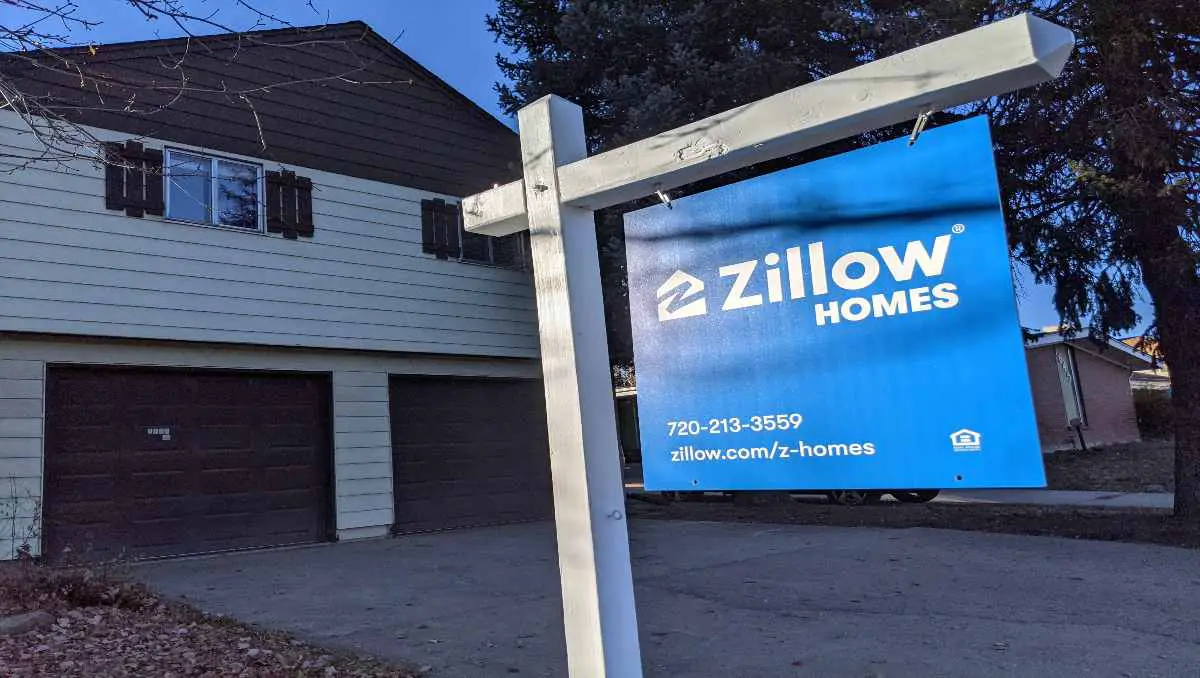
To effectively market your tiny home on online platforms, it is crucial to employ various strategies.
Start by utilizing online advertising and social media promotion to reach a wider audience. Engage with potential buyers by offering virtual tours that showcase every nook and cranny of your tiny home. Professional photography plays a vital role in capturing the essence and uniqueness of your space.
Ensure that your pricing strategy aligns with the current market trends to attract serious buyers. By employing these tactics, you increase the chances of selling your tiny home quickly while creating an inviting sense of belonging for potential buyers in the process.
Local Networking
If you want to connect with like-minded individuals and potential buyers in your area, local networking is the key. By attending local events and actively participating in community involvement, you can spread the word about your tiny home and find interested buyers through word of mouth.
Building strong relationships with local partners, such as real estate agents or home builders, can also help expand your network and increase your chances of finding a buyer quickly.
Additionally, attending networking events specifically tailored for homeowners looking to sell their properties can provide valuable opportunities to showcase your tiny home to a targeted audience.
Cracking the Code: The Verdict on Tiny Home Selling Times
In conclusion, selling a tiny home can be influenced by various factors, such as location, market demand, and pricing strategies.
On average, it takes around 3 to 6 months to sell a tiny home. However, an interesting statistic reveals that homes priced below $50,000 tend to sell faster than those priced higher. Therefore, setting a competitive price within this range could attract potential buyers and expedite the selling process.
By following effective marketing strategies and addressing legal considerations, you can overcome challenges and successfully sell your tiny home.

